The Department of ECE
About the Department
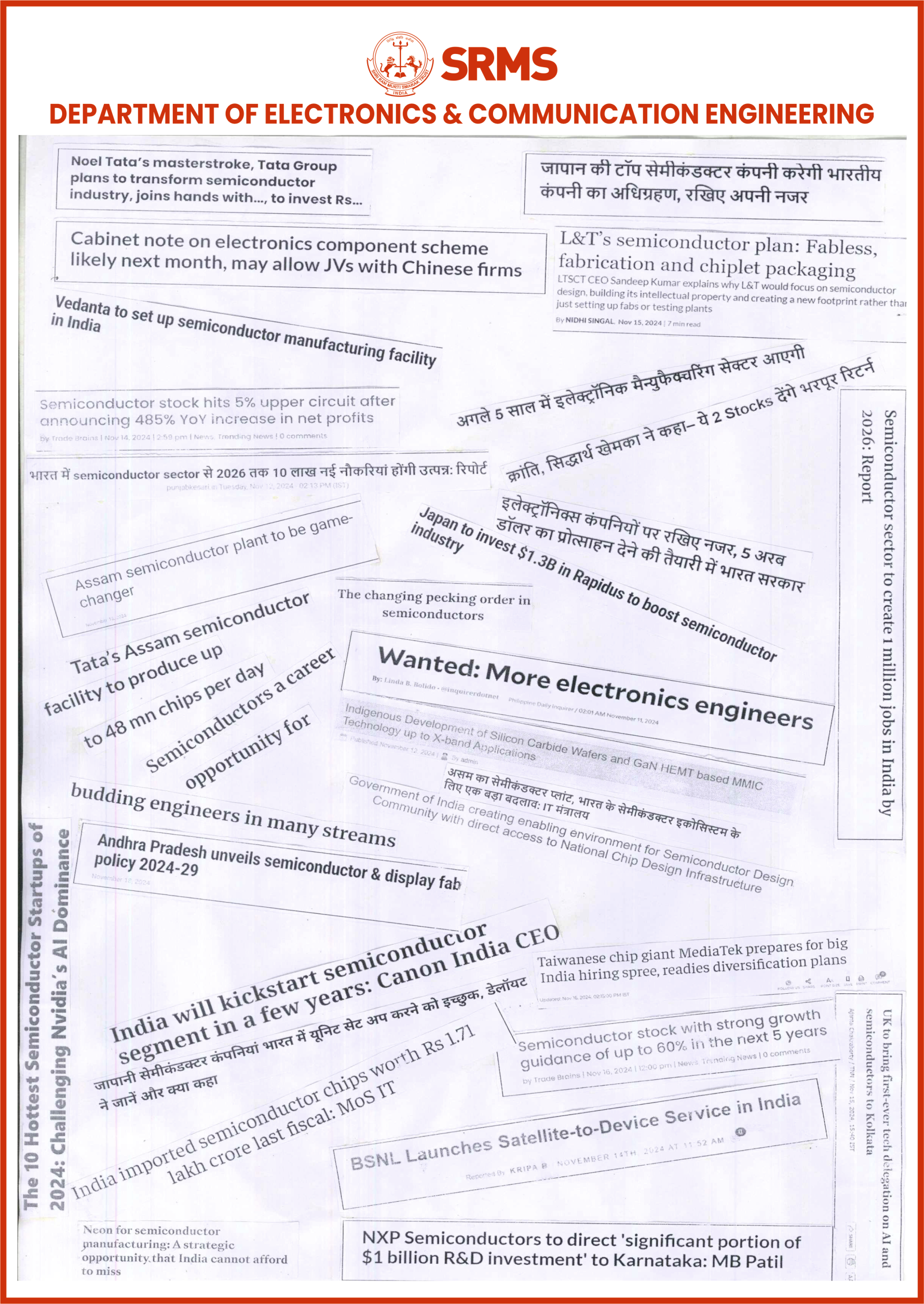
Electronics & Communication Engineering: Innovating The Future
“Electronics is a way of sensing, feeling, connecting the spectacular, the immense, the minute beautiful, thrilling interwoven whole”.
Electronics and Communication Engineering (ECE) is shaping the modern technology by combining the physical, digital, and the virtual world. It is the bedrock of Information and Communication Technology (ICT) and the building blocks of global connectivity through the future digital networking world. ECE expands its wings to sectors like Telecom, Defense, Space, Internet Surveillance, Health Care, Automation, and Aviation technology. Electronic sensor chips, logic chips, communication chips, memory chips in display drivers, and audio and video processing kept the world in motion. The importance of Electronics has been accelerated by a paradigm shift in technologies like Very Large Scale Integration (VLSI), 5G Mobile Technology, Internet of Things (IoT), Artificial Intelligence (AI), Drones and Robotics to a mixture of flesh and Silicon soon.
This sector empowers by Software-based Cryptography, Graphic design, Electronic Design & Automation tools-based professionals. A strong ECE sector fosters technical entrepreneurship and drive industrial growth.
Why Electronics And Communication Engineering?
The Indian government has launched several initiatives, such as the India Semiconductor Mission and the Development of Semiconductors and Display Manufacturing Ecosystems in India, to boost domestic manufacturing.
Significant investments have been made in the semiconductor sector. For example, companies like Micron, Tata Electronics, and CG Power have committed to major projects in India. The semiconductor market in India is projected to grow from $52 billion in 2024-25 to $103.4 billion by 2030.
The demand for electronics and semiconductors in India is rising due to increasing digitalization, the adoption of new technologies, and the growth of sectors like automotive and industrial electronics.
With the global trend of diversifying the semiconductor supply chain, India is positioning itself as a reliable partner.
Govt. of India Initiatives on Electronics:
Government shows its commitment to the electronics manufacturing ecosystem in India. Semicon India, Make in India, and Digital India schemes are the key to India’s electronics integration into the global value chain. Semiconductor is expected to grow to become $588 billion industry in 2025 and it can stimulate 07 trillion economies to enhance a range of backend applications such AI and Big-data. Semiconductors are the foundation of the nation to compete in the global economy. Fabrication of semiconductors is the most complex and sophisticated manufacturing activity humanity undertakes. Recently, rising geopolitical tension resulted in multinational companies trying to adopt ‘China plus one strategy’ to boost their supply chain resilience, diversification, sustainability, and cost competitiveness in bio-pharmaceutical, information and communication technology, green energy, etc. India Semiconductor Mission and Make in India for the World campaign, India is turning its attention to semiconductor fabrication in designing, manufacturing, assembling, testing, and packaging. However, the semiconductor industry is facing an extreme shortage of talent and experts in the field of Electronics. India as a semiconductor talent nation requires 8.4 million graduates, 0.7 million postgraduates, and 0.13 million Ph.D. engineers by 2026.
The Department of Electronics and Communication Engineering, Shri Ram Murti Smarak College of Engineering and Technology, Bareilly, is preparing itself to tackle this national talent crisis by adding new electronic design automation tools such as Cadence, Synopsis, Xilinx, Advanced Design System, High-Frequency Structure Simulator, Verilog/ VHDL simulators such as ModelSim, Synopsis VCS, Technology CAD, Scripting and Automation tools to its inventory.
Programs Offered:
The Department of Electronics and Communication Engineering offers programs of study leading to B.Tech and M.Tech degrees. The ECE undergraduate and postgraduate enrolment is sustained by recruitment at world-leading and renowned organizations like Intel, Google, Microsoft, Adobe, Qualcomm, Texas Instruments, Honeywell, IBM, Cognizant, Tata, ISRO and many more. The department has a vibrant research environment in Digital Communication, Signal Processing, Avionics, Electromagnetic Interference and Electromagnetic Compatibility (EMI/EMC), RF and Microwave Communication, Antenna and Wave Propagation, Machine Learning (ML) and Artificial Intelligence (AI) in Biomedical Electronics, etc.
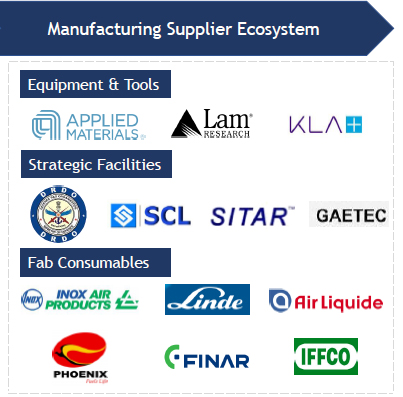
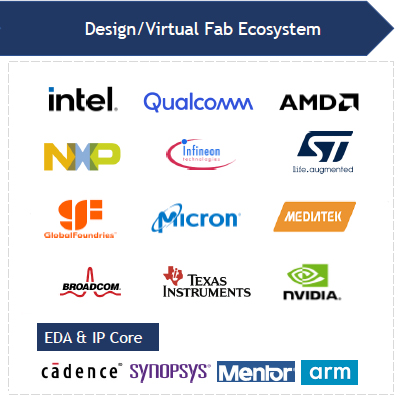
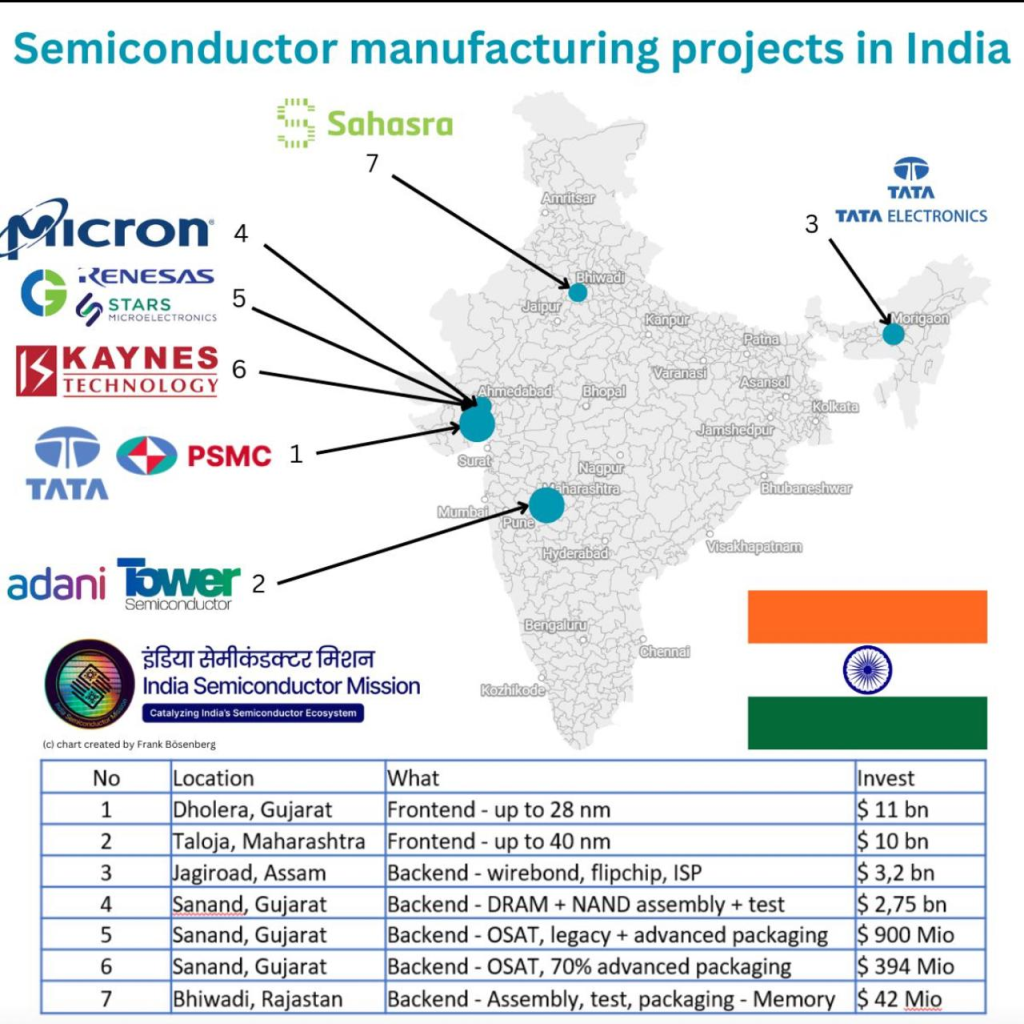
India’S Semiconductor Mission
Launched in 2021 under the Ministry of Electronics and Information Technology (MeitY), the India Semiconductor Mission (ISM) is India’s flagship programme to develop a full-stack semiconductor ecosystem, from design to manufacturing and testing. The ISM comes with a financial outlay of Rs 76,000 crore (around $10 billion) and is tasked with implementing key incentive schemes and policy initiatives.
India’s semiconductor market was valued at $45 billion in 2023 and is expected to cross $100 billion by 2030, according to an Economic Times report. This growth is powered by a booming demand for smart phones, laptops, electric vehicles, medical devices, and defense systems, all of which need chips.
But it’s not just about demand. Semiconductors are critical to national security and technological sovereignty. The global chip shortage during COVID-19 exposed how vulnerable economies can be without domestic production capabilities.
India’s new semiconductor facilities are:
-
Tata Group & Powerchip (Taiwan):
Rs 91,526 crore fab in Dholera, Gujarat, expected to begin production by end-2026.
-
Micron Technologies (US):
ATMP facility in Sanand, Gujarat, focuses on memory packaging and testing.
-
Foxconn-HCL (New):
Rs 3,700 crore display driver chip facility near Jewar, Uttar Pradesh, the sixth approved unit
-
Tata Electronics (Assam):
Advanced packaging (ATMP) unit, set to start production by mid-2025.
-
CG Power, Renesas, STARS Microelectronics:
OSAT facility in Sanand, Gujarat for outsourced testing and packaging.
-
Kaynes Technology:
Another OSAT facility in Sanand, Gujarat, approved in Sept 2024.
USP’s of Department of Electronics and Communication Engineering
- A premier academic environment fostering innovation and research.
- We are dedicated to Outcome Based Education, aligned with NEP 2020 policy.
- Project-based learning that encourages exploration and real-time solutions for aspiring engineers.
- State-of-the-art infrastructure equipped with modern laboratories.
Centre of Excellence in Electromagnetic Interference and Electromagnetic Compatibility (EMI/EMC).
- Internet of Things Laboratory: Dedicated to advancing innovation and research in IoT technologies, providing hands-on experience with cutting-edge tools and real- world applications.
- Antenna Design Facilities: Equipped with state-of-the-art tools and technology to support innovative antenna development and testing enabling breakthroughs in communication systems.
- The department offers value addition courses in ANSYS HFSS, MATLAB, CADENCE, LAB-VIEW, ADS, C, C++, PYTHON, VHDL, etc.
- Robotrax Club: Offers a mix of beginner and intermediate-level hands-on workshops to up-skill students in robotics, drone technology, electric vehicle, etc.
- In addition to regularly planned curriculum classes, the department encourages students to continue their education and provides them with additional time to prepare for GATE, GRE, IELTS, TOEFL, CAT, GMAT, etc.
Research Laboratory (Department Of ECE):
The Department of Electronics and Communication Engineering has two Research Laboratories and eleven laboratories. The Research laboratories are:
1. Antenna And Microwave Laboratory
Today Microwave Communication Technology is exploding with entire new galaxy of products. Microwave Communication is becoming instrumental to make a way for ultra high speed communication and miniaturization of the components. Electronics Technology in Microwave band is a real challenge from engineering design and product development point of view as physical size of the device is comparable to wavelength and distributive analysis is replacing the traditional lumped analysis. Antenna and Microwave Communication Laboratory is bridging the technical gap between know how of critical technology, hard end design and measurement of the product. This laboratory is playing a significant role in the field of Research and Development. It is powered by ANSYS HFSS 14.0 Commercial Software, Advanced Design System Software (ADS), Origin Pro.8 Software. It contains almost all fundamental Optical, Microwave, Antenna and RADAR components along with some impeccable knowledge oriented and experienced individuals. In this laboratory research is mainly focused on designing Antenna for various Sensors, Transmission lines, Filters, Resonators, Wireless components, Transmitter and Receiver design etc. It is one of the most active and prolific laboratory in SRMS CET. It has more than 50 international publications under his belt with more than 25 M.Tech Thesis. This laboratory is contributing in making high end professionals of national and international stature.
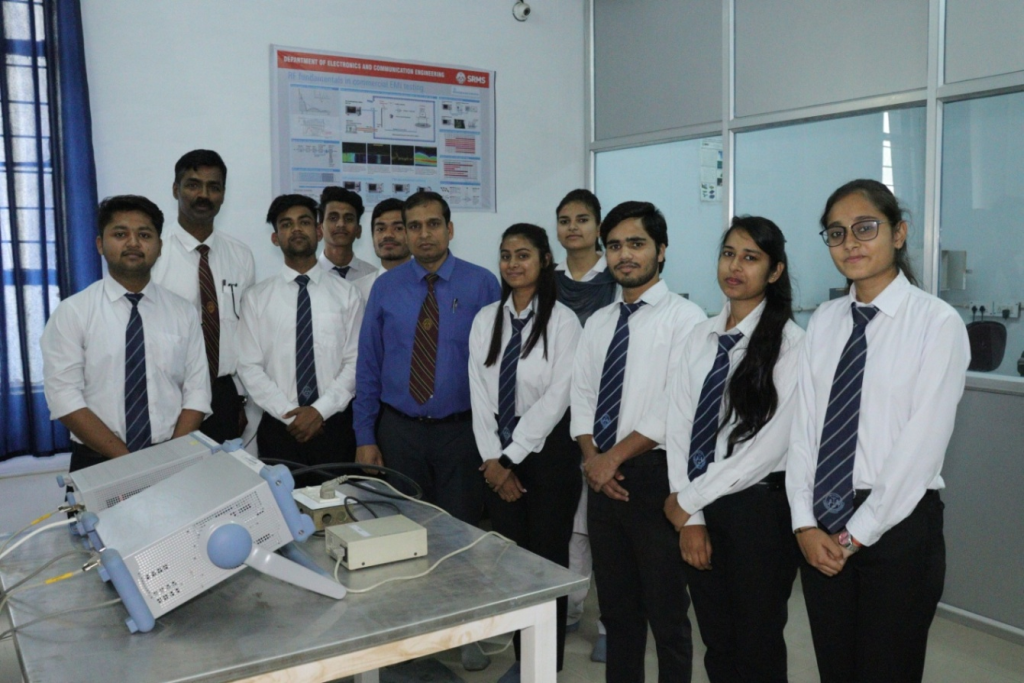
2. Electromagnetic Interference & Electromagnetic Compatibility (Emi/Emc) Laboratory
Department of Electronics and Communication Engineering, SRMS CET, Bareilly has been sanctioned with Rs. 20 lakh by the All India Council of Technical Education (AICTE) for the up-gradation and modernization of its Microwave laboratory under the MODROB scheme. A high standard testing facility has been created to test, specify, and approve electromagnetic interference and electromagnetic compatibility (EMI/EMC) of electrical and electronics products in line with the Government regulatory agencies and international standards.
All modern equipment dispersed energy through radio waves in air as radiated emission and conducted through power lines and cables by conducted emission disturb the equipment working in the vicinity. EMI/EMC has grown in importance due to the increased speed and use of digital electronics in today’s world and the virtual worldwide imposition of government limits on the radiated and conducted noise emissions of electrical/ digital electronics products.
This laboratory will be helpful to the researchers and practicing engineers to find various methods of interference mitigation and implementation. It offers in-depth consulting services of international and country-specific test standards such as IEC, CISPR, EN, ETSI, CFR, ISO, ITU-T, GR-1089-CORE, DO-160, MIL-STD461, and MIL-STD-704. It caters to the Conducted Electro Magnetic Compatibility testing needs. It will fulfill all the pre-compliance criteria of a research design and a manufactured product.
Laboratory & Softwares:
- Integrated Circuits Laboratory (Xilinx, Cadence)
- Microprocessors & Microcontrollers Laboratory (Keil, Proteus) Microcontroller: 8051, MSP 430
- Communication Engineering Laboratory (GNU Radio, MATLAB)
- Project Laboratory
- Electronics Circuit Design Laboratory (OrCAD, Proteus, NI Multisim)
- Digital Electronics Laboratory (FPGA)
- Electronics Workshop & PCB Design Laboratory (Virtual Bread Board, Tinker CAD)
- Electronic Measurement & Instrumentation Laboratory
- Innovation and Tinkering Laboratory (SolidWorks)
- Internet of Thing(IoT) Laboratory: (Rasberry PI, Arduino Mega 2560, Arduino UNO, ESP 8266, AVR Programmer, Tinker CAD, Arduino IDE, Rasberry PI OS, Tensor Flow and Edge AI)
| S.N0. | Research Lab/Facilities | Specifications | Nature of Research Work | Dept. |
| 1 | Electromagnetic Interference and Electromagnetic Compatibility Laboratory | LISNs / ISNs / Attenuators Surge / EFT / ESD Generators Signal Generators / Amplifiers / EMI Receiver Elektra Software | This laboratory offers in-depth consulting services of international and country-specific test standards such as IEC, CISPR, EN, ETSI, CFR, ISO, ITU-T, GR-1089-CORE, DO-160, MIL-STD- 461, and MIL-STD-704. It caters to the Conducted Electro Magnetic Compatibility testing needs. It will fulfill all the pre-compliance criteria of a research design and a manufactured product. | ECE |
| 2 | Antenna and Microwave Laboratory | ANSYS HFSS 14.0 3D Electromagnetic Software Power meter NV 9008 Microstrip Integrated Trainer NV 2001 Radar Trainer with Software Optical Trainer Kit ST 2502 ST 2551 with Optical Power meter VSWR meter Microwave Signal Generator NV 104. | This laboratory offers design, development, and analysis of transmission line propagation, antennas and microwave active/ passive circuit components. It offers design, analysis and simulation of various components and devices to understand the basics and advanced of RF, Microwave engineering, and Optical Engineering. | ECE |
Top Company that hires Electronics and Communication Engineers:
An electronic engineer can find a job in Consumer electronics manufacturing organization , Telecommunication & IT industries, Health care equipment manufacturing , Mobile communication(2G,3G,4G,5G), Internet technologies, Power Electronics, and other industries like steel, petroleum and chemical industry, directing control and testing production process.
-
Core Company:
Texas Instruments, Qualcomm, Cosmic Circuits, C-Dot, Free scale, ARM, Nvidia, Synopsis(EDA), Mentor Graphics(EDA), Bechtel, Siemens, Samsung, Sony, LG, Bose, Philips, Hitachi, Panasonic, Honeywell, Mitsubishi, Nokia, Boeing, Airbus and many more.
-
Software Company:
InMobi, Cisco, Infibeam, Pitney Bowes, American Express, Goldaman Sachs, Amadeus Software Labs, Interview Street, CVent, InfoEdge, Accolite, Naggaro Software, Nucleus Software, Q3 Technologies, EvalueServe, Wipro Technologies, Gwynniebee, Aspiring Minds, Sapient, Adobe, Microsoft, Google, Directi, Flipkart, Walmart Labs, HCL, Infosys and many more.
-
Govt and Public Sector:
ISRO, HAL, DRDO, BSNL, MTNL, BBNL, RAILTEL, IRCON, AAI, BHEL, IOCL, ONGC, HPCL, NTPC, PGCIL, NLC, Indian Air Force/Army/Navy, and many more.
Electronics and Communication Engineering graduates are in high demand across diverse industries such as aviation, defense, healthcare, wireless communication, automation, sensing, signal processing, optical technology, etc., ensuring abundant placement opportunities. So far, in 2025, 80% of ECE students of SRMS CET are placed with multiple job offers. With rapid advancements in technology, their expertise is crucial in driving innovation and connectivity in the future.
Million Chips, Billion Dreams!

